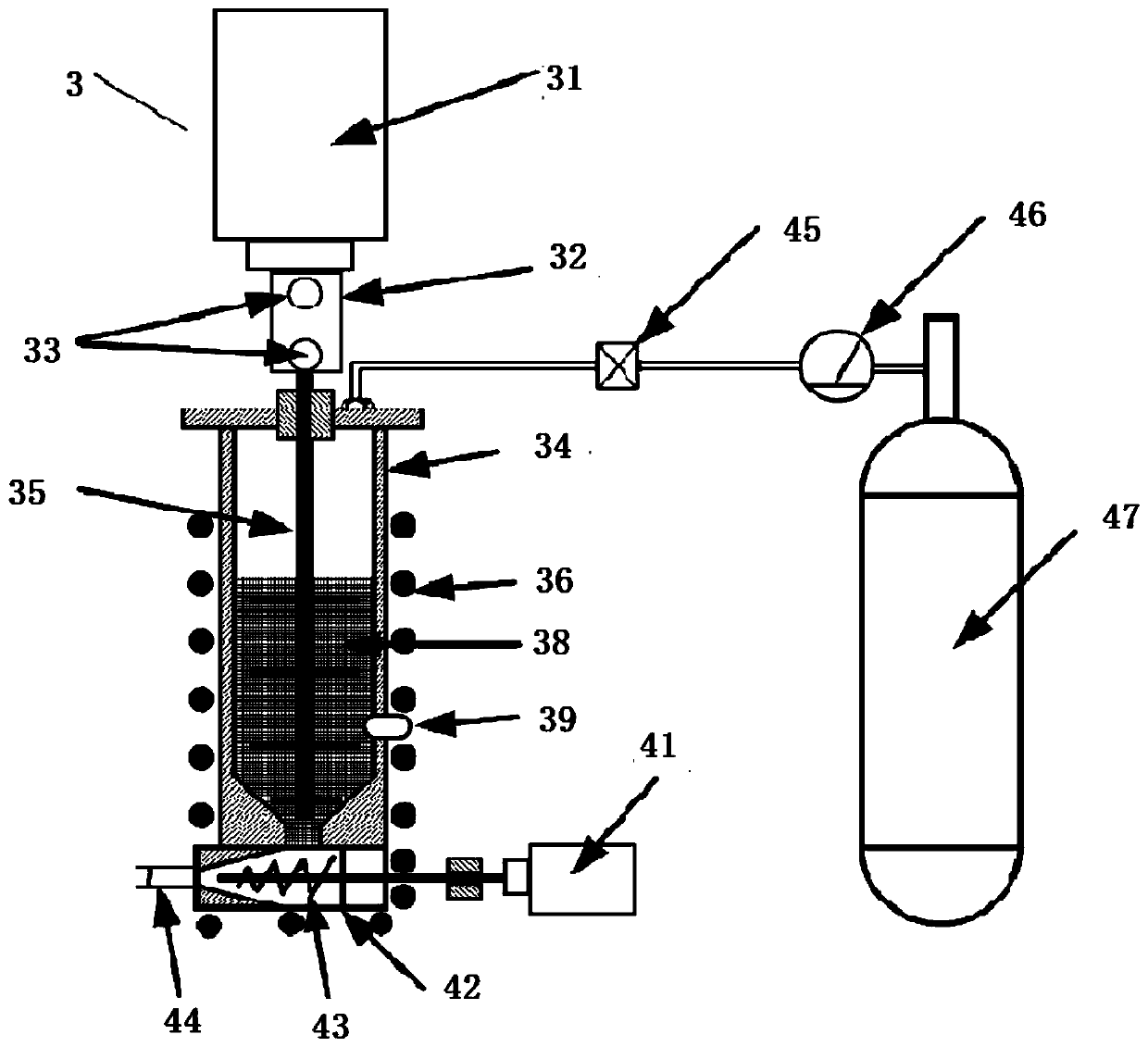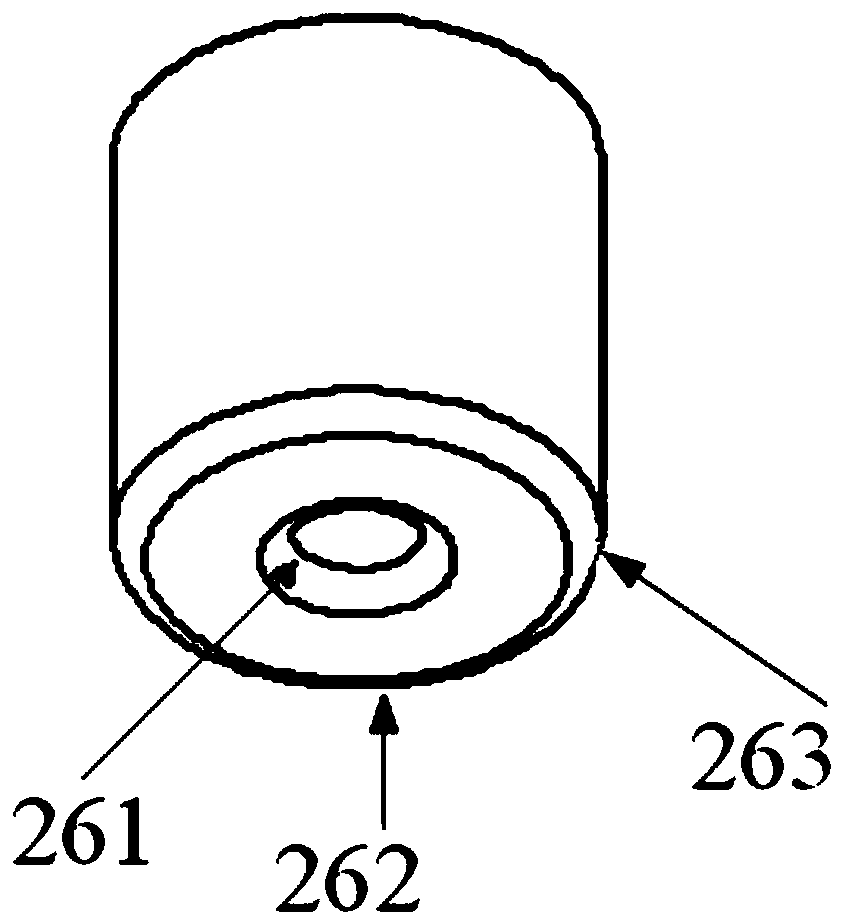Formed material blended feed type aluminum matrix composite 3D printing device and printing method
An aluminum-based composite material and molding material technology, applied in the field of 3D printing, can solve the problems of increasing the difficulty of laser 3D printing technology, poor wetting and bonding, uneven distribution of enhanced particles, etc., to improve the uniformity of composition distribution and performance. , Low material cost, and the effect of improving mechanical properties
- Summary
- Abstract
- Description
- Claims
- Application Information
AI Technical Summary
Problems solved by technology
Method used
Image
Examples
specific Embodiment approach 1
[0057] Specific implementation mode one: combine Figure 1 to Figure 4 This embodiment is described. The molding material blending and feeding aluminum-based composite material 3D printing device of this embodiment includes: an industrial control cabinet 1, an ultrasonic-assisted printing module 2, a storage and delivery module 3, and a three-dimensional movement module. The industrial control 1 cabinet includes the control of the total power supply, heating power supply, temperature, argon gas switch and three-dimensional movement.
[0058] The ultrasonic-assisted printing module 2 includes a first ultrasonic transducer 21, a first horn 22, a cooling water outlet 23, an ultrasonic tool head 24, a second heating module 25, a printing nozzle 26, and a second temperature sensor 27 , the bracket 28 , the substrate 54 , the third temperature sensor 55 and the third heating module 57 . The three-dimensional mobile module includes a Z-axis synchronous motor 51 , a laser range finde...
specific Embodiment approach 2
[0060] Specific implementation mode two: combination image 3 and Figure 4 To illustrate this embodiment, the printing process of the printing nozzle 26 in this embodiment is that the diameter of the liquid mixture outflow pipe at the printing nozzle is in the range of 20 μm-1000 μm, and the outflow pipe in the printing nozzle and the plane 262 transition with a rounded chamfer 261, and the rounded chamfer The radius of the corner 261 is 50-600 μm. With the movement of the platform, the rounded corner 262 can make the transition of the extrusion process smoother. At the same time, due to the limited distance of the ultrasonic action, the printing distance is generally 100-300 μm. Under such a narrow gap , the liquid metal tends to flow down the plane 262, the squeezed liquid metal is in close contact with the plane 262, the upper and lower ultrasonic vibrations of the plane 262 will cause the internal flow of the liquid metal, play a role in stirring, and make the powder part...
specific Embodiment approach 3
[0061] Specific implementation mode three: combination Figure 1 to Figure 4 Describe this embodiment. This embodiment provides an ultrasonic-assisted 3D printing method for aluminum-based composite materials. The method selects a temperature 20-100°C higher than the melting point of the metal material to be printed as the printing temperature, and the preheating temperature of the substrate It is 50-200°C lower than the melting point of metal materials, and the printing speed is 5-20cm / min. It can realize 3D printing to prepare aluminum matrix composite materials and parts with unlimited size of base aluminum alloy raw materials. The molding material mixture 38 is ultrasonically stirred in advance to obtain a more uniform mixture, and the printing parameters are set to improve the printing quality.
[0062] Specific implementation mode four: combination Figure 1 to Figure 4 Describe this embodiment, the printing steps of this embodiment:
[0063] S1: Put pure aluminum or ...
PUM
| Property | Measurement | Unit |
|---|---|---|
| Size | aaaaa | aaaaa |
| Diameter | aaaaa | aaaaa |
| Diameter | aaaaa | aaaaa |
Abstract
Description
Claims
Application Information
 Login to View More
Login to View More - R&D
- Intellectual Property
- Life Sciences
- Materials
- Tech Scout
- Unparalleled Data Quality
- Higher Quality Content
- 60% Fewer Hallucinations
Browse by: Latest US Patents, China's latest patents, Technical Efficacy Thesaurus, Application Domain, Technology Topic, Popular Technical Reports.
© 2025 PatSnap. All rights reserved.Legal|Privacy policy|Modern Slavery Act Transparency Statement|Sitemap|About US| Contact US: help@patsnap.com



